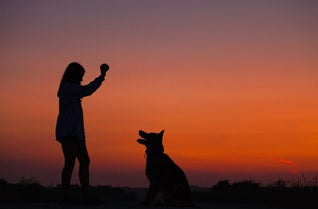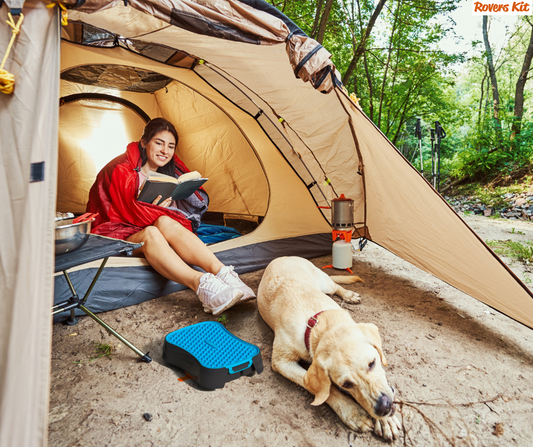Our Best Tips for Walking your dog during the darker nights.
Walking our dogs in the dark is a regular occurrence for most of us once the winter months are upon us. It’s not ideal, but unless our lifestyle allows us the flexibility to be able to walk our dog during daylight hours, it's necessary.... so, we all reach for our torches and reflectors as the committed dog owners we are… and if we’re honest we all love to take our dogs out (that’s why we are dog owners) and a night walk can feel like a bit of an adventure –
Here are our 5 top tips to make sure when you’re out in the dark, both you and dog are safe and visible.

Firstly, a quick re-cap - remember dogs can see better than us in the dark and they enjoy walks morning, noon and night… Science fact coming up - Dogs have better vision in very low light than humans because they have more rods—the photoreceptors in mammalian eyes that determine low light (or scotopic) vision, they also have a mirror-like tissue behind their retina called the tapetum lucidum, or “shining layer.” This reflects incoming light back across photoreceptor cells a second time. Humans and most other primates don’t have this layer that improves night vision.
- Make Your Dog Visible
The main danger in the dark lies with reduced visibility for us humans, so the most important rule in winter is safety and visibility. When walking at night make sure your dog is highly visible to drivers, bikers and other pedestrians. Dogs with dark fur are much harder to see at night than lighter dogs, but all dogs require safety gear for low light outings.
There are numerous options to ensure your dog is visible such as reflective collars or reflective dog jackets, leads and harnesses which all work well – but, this is only when there is light around to reflect from such as street-lighting or car lights etc. In our opinion these are all good additional item for dogs out the dark. We believe the most important accessories for great visibility is the LED Collar, they are easily the best choice for visibility and keeping your dog safe. We recommend and stock Leuchtie LED Collars, they have a brilliant reputation and come in various sizes to suit dogs of all shapes and sizes. You can also choose between battery operated and USB chargeable options. If you’re interested in finding out more either visit our LED Collar section of our website https://www.roverskit.co.uk/collections/leuchtie-led-dog-collars/Leuchtie or Leuchtie’s UK website https://www.leuchtie.co.uk/
- Keep your Dog close
We like to recommend that for dogs kept on a lead during walks in the dark, especially on paths or when close to any oncoming traffic. If you’re out in the middle of nature and you like to let your dog off the lead, it’s important to keep them close by and visible to you. You know your own dog, but just remember there can be a lot of activity going on at night in the woods, trees and hedges which could potentially be a big temptation for your dog wanting to go and investigate. It is a legal requirement that dogs wear a collar with a dog tag stating owners details and are microchipped so people can quickly contact you if your dog was to run off.
- Stay Local and where you know
We suggest dark walks are not the best time to explore unfamiliar territory. Staying local and where both you and your dog are familiar with, is a much safer option. Where possible stick to well-lit roads and paths, and ideally those away from high volumes of traffic. If you do have to walk close to a busy road, it’s safer to keep your pooch away from the curb as you’re likely to be seen easier than a dog as they are naturally lower to the ground.
- Dogs behaviour in the dark
As we’ve mentioned earlier dogs can see better in the dark than us, yet despite this, it’s possible your dogs behaviour may be different when it’s dark… why, you ask? It’s the same as us with objects looking slightly different in the dark compared to the daylight, so make sure you stay alert and you can react accordingly.
- Be properly Equipped
It’s our responsibility to ensure we are dressed appropriately – including reflective clothing. Also, a torch and mobile phone are very handy to have… some dog owners like headtorches as they keep their hands-free, other simply use the torch on their mobile phone.










